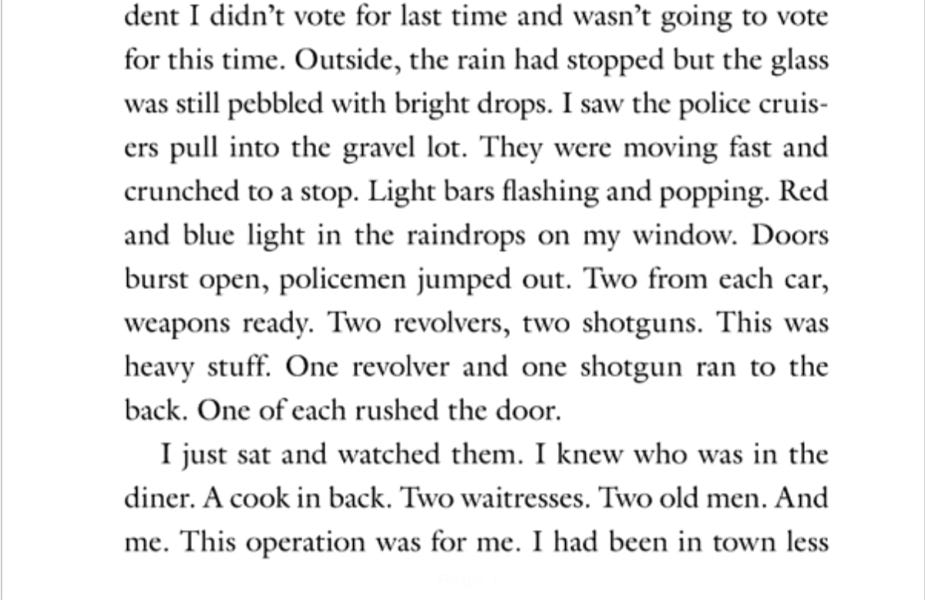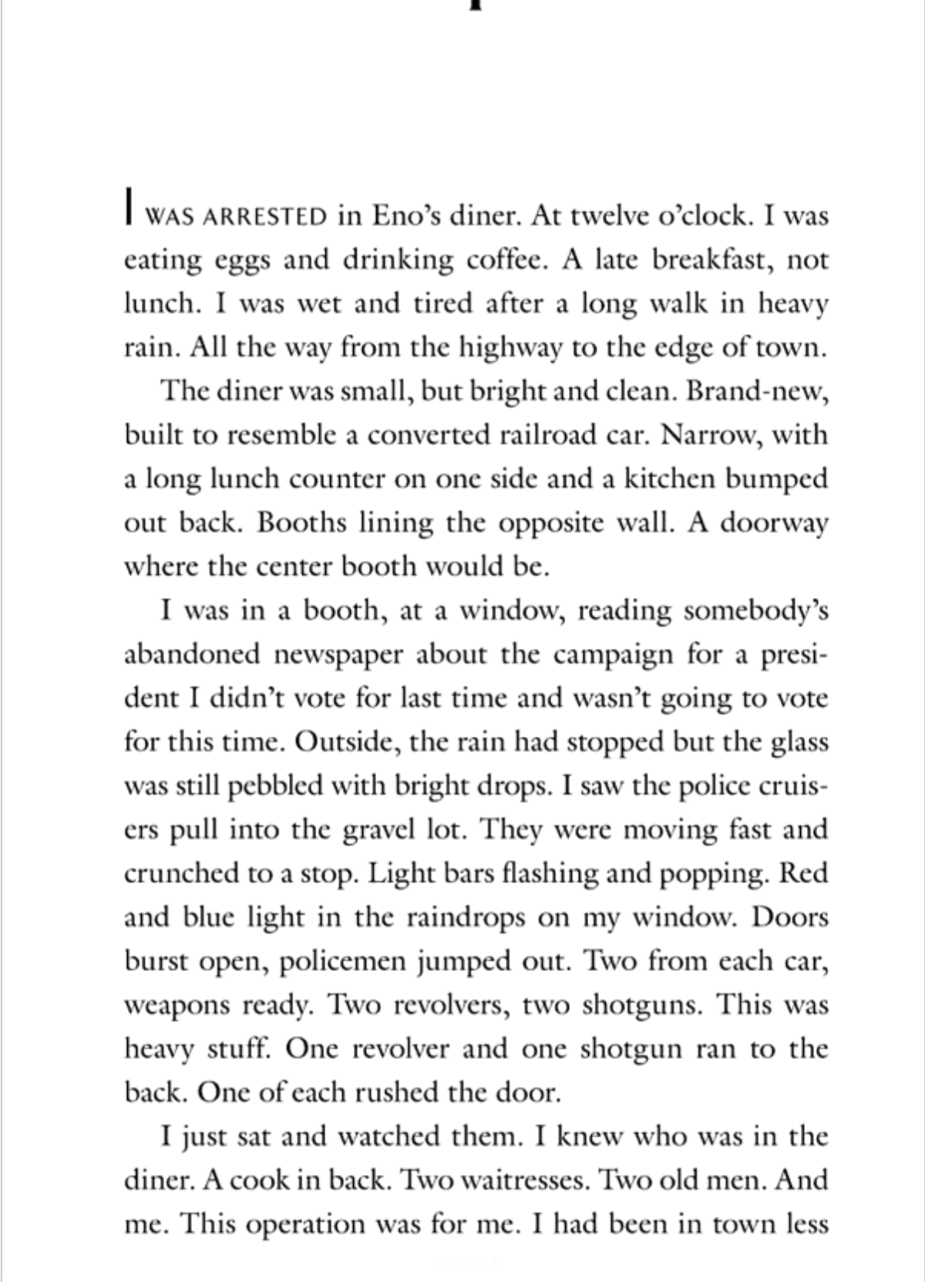Favorite Openings: The Killing Floor

I see a lot of people on my timeline making fun of Lee Child. They mock his prose, his characterizations, his approach. And, yeah, sure, there are things to criticize. But I also think he’s a master stylist and an incredibly effective storyteller. I not so secretly love the early Jack Reacher books. I think they are pure adrenaline fun and Reacher is a phenomenal character to carry a whole series on his massive, massive shoulders.
Anyhow, I want to talk about how brutally effective this opening page is from The Killing Floor. This is the very first time readers will meet Jack Reacher. This is the first time we’re introduced to Child’s world, his rules, his characters. And god damn— I love it so much.

This is, in so many ways, the exact opposite of the Hill House example I used yesterday. Stylistically, narratively, aesthetically. But it is just as effective.
One of the first things to notice about this page is how ruthlessly blunt it is. There are so few… verbs. So few full sentences. Anyone who’s been a long time reader of this newsletter has to be zero percent surprised that I think a list of fragments can be very effective at making a point.
The thing about all of these fragments, the clipped, short tone, the rat tat tat rhythm of it is that it gives us character. We don’t know Jack Reacher’s name, profession, history. But from this opening alone, we know he’s someone who thinks about threats, about weapons, who is always aware of his exits, the dangers in a room, the obstacles. He describes the diner in terms we can understand. We can see the space in our mind’s eye. The implied tactical awareness of how to move through a space. That he’s a man who is old-fashioned because he prefers a diner that is old-fashioned. That he’s an underdog, walking through the rain all the way from the highway.
We learn Reacher’s thought process. The second paragraph starts with a rambling unfocused sentence about the paper. “In a booth, at the window.” Something about a president. Bored indifference and ordinary routine. But then the police cruiser arrives and you can feel his thought process accelerate here. “I saw the police cruiser” to “They were moving” to “Doors burst open, policemen jumped out.” The thoughts are going faster, verbs and subjects are dropping. Sentences running together. Guns, movement, strategy.
We get that this is a man who thinks about violence and its execution. Just from the description we get, not only the excitement and adrenaline rush, but that up against his calm observation. We know he’s a dangerous man because of how he reacts to danger.
We also have a question. This is not a man afraid of arrest, of police. Why? We learn a lot in this question. He’s white. He’s got authority. He’s confident. He has reasons to feel unthreatened. He not only has physical command of the situation, he has structural command. He believes he will be untouched by this in the long run.
And so, when we learn later that Reacher is a cop, former military police, it is no surprise.
There’s so much character and world in this opening. A simple scene of blunt, simple description gives us an entire world. Because world building isn’t about made up names and descriptions of faerie castles. World building is about rules. What are the principles that drive your world? What are the boundary conditions around action? What are the consequences of violence? Will battles be fought with fists or with words? What does failure look like? What does victory look like?
This opening tells us that the rules are about the law. It tells us that power is the authority of the state and the consequences of violating those rules is violence. It also tells us that some men are above those rules and Jack Reacher is one of them. This, in turn, implies that the men he will be up against are also above those rules or at least believe themselves to be. This opening says: this is a book about crime, but not about the law. It is a book about how violence, outside of a strict application of the law, is sometimes the answer. It establishes the world by showing us the rules of how it works.
Child is a stylist. He may not be pursuing a beautifully turned phrase. He may not be lauded as a great lyricist. But this opening drips and oozes with style and confidence. The changing rhythms of the prose, the sharp firing of Reacher’s neurons, all of it says “I know who this man is and I’m going to tell you about him.”
There’s such authority to this page and it’s compelling. As a reader I know, by the end of this page, that here is a writer who knows how to tell a tale. I trust him. I feel that this will be worth my time to sit with because a firm, strong hand is on the tiller.
Voice, character, world, tension. These are the elements of a great opening. Show your reader you can give them these things clearly, concisely, and leave them with questions they want answered, and they’ll be yours. This is authority. This is the power of a strong start. Layer in as much as you can, as quickly, and as interestingly as you can. There are lots of ways to do this. If you’re Lee Child, sometimes that means dropping a few of the words that usually go in a sentence. Now go find your own way to do the same.
